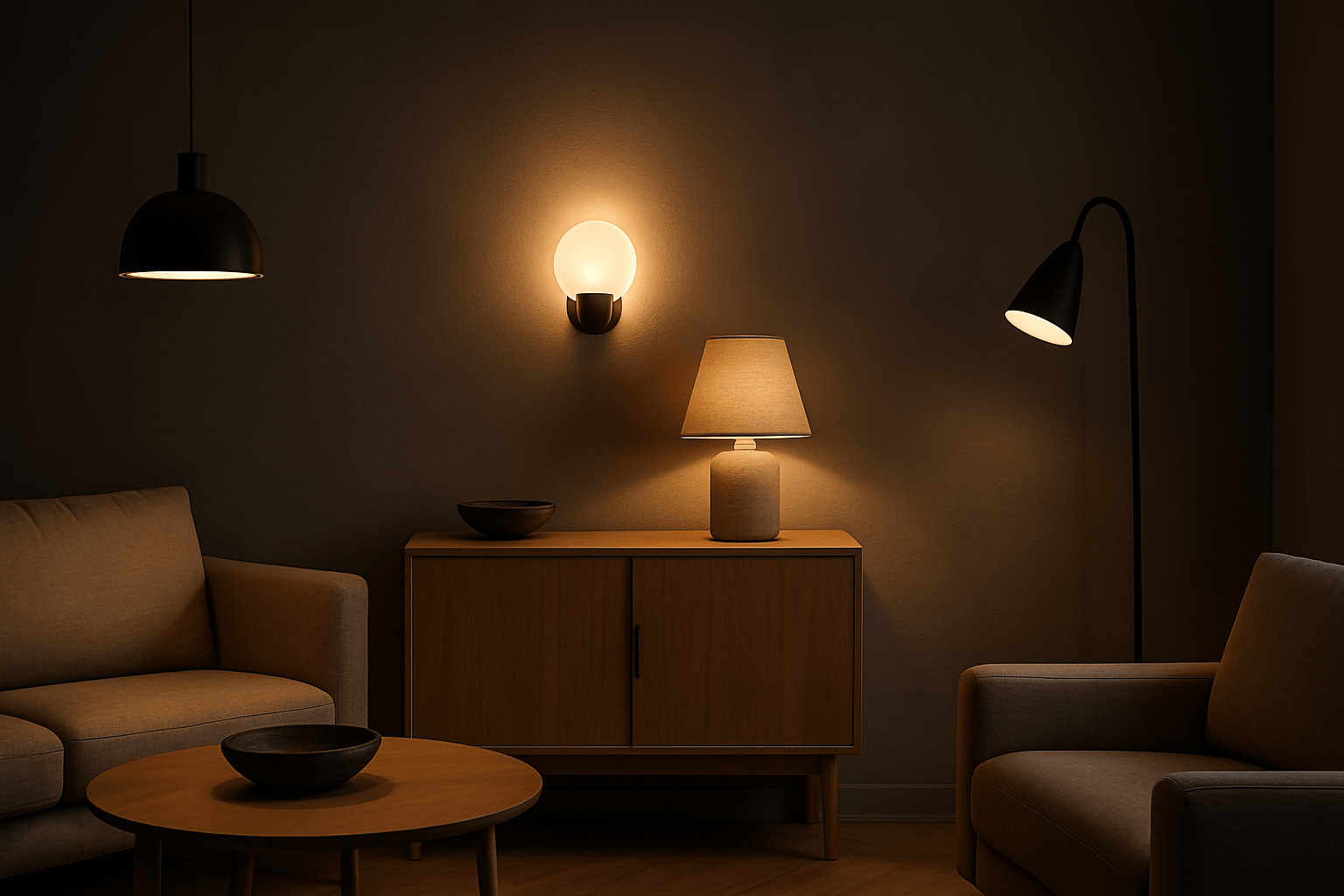What is Layered Lighting?
Layered lighting is the art of combining multiple light sources to enhance functionality and atmosphere. In a well-designed home, lighting is never just one overhead bulb—it’s a subtle composition of ambient, task, and accent lighting.
Ambient Lighting – The Foundation
Also known as general lighting, ambient light is your room’s primary source of illumination. Think ceiling fixtures, flush mounts, or evenly placed recessed lights. The goal is to softly fill the space with light without harsh shadows.
Tip: Use dimmable LED bulbs in warm temperatures (2700K–3000K) to keep the light calm and cozy.
Task Lighting – Focus Where You Need It
Task lighting supports specific functions—reading, cooking, working, or applying makeup. Desk lamps, kitchen under-cabinet strips, and bedside sconces are all examples. These are lights with purpose and precision.
Tip: Choose adjustable fixtures or directed light to minimize glare and eye strain.
Accent Lighting – Adding Depth and Drama
Accent lighting highlights architecture, texture, or decor. Think wall-mounted uplights, LED strips under floating shelves, or even an elegantly placed floor lamp that spotlights a sculpture or a corner.
Tip: Accent lighting should be 3–5 times brighter than ambient lighting in the same space to create contrast.
How to Layer in a Minimalist Home
In a minimalist interior, each fixture must earn its place. Instead of excess, focus on intentional design: a sculptural floor lamp, a slim sconce that casts beautiful shadows, or a linear pendant over the dining table.
Material matters too—brushed metals, smoked glass, and stone bases blend seamlessly with a pared-down palette.
Placement Tips for Balance
-
Living Room: Ambient from ceiling, task by sofas (reading lights), accent near artwork or corners.
-
Bedroom: Ambient via pendant or flush light, task via bedside lamps, accent on the headboard or walls.
-
Kitchen: Ambient via recessed or central fixture, task under cabinets, accent via toe-kick LED strips.
Why It Matters
Well-layered lighting doesn’t just look better—it feels better. It reduces eye strain, improves mood, and helps define zones within open layouts. It’s both aesthetic and functional.
Closing Thoughts
In minimalist design, balance is everything. Lighting is your quiet hero—guiding the mood, defining space, and adding softness without clutter. Master the layers, and your home becomes more than functional—it becomes atmospheric.
















